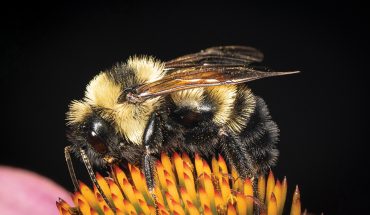by Tony Avent
illustration by Ippy Patterson
Epimediums, or fairy wings, are perennial members of the barberry family, which have been popular since at least the mid-1700s. This woodland shade perennial flowers in early spring, and can trace its popularity to an increasing availability in ornamental nurseries, as well as a boom in “medicinal” use of the plant outside its native China.
That’s where epimedium is known by the medicinal common name: “horny goat weed”. Many years ago, an observant farmer noticed his goats becoming exceptionally amorous when grazing in a particular section of pasture. Today, epimediums’ ability to boost blood flow in certain male extremities has prompted ground epimedium leaves to be sold under a number of trade names for that particular purpose. This, of course, opens many new opportunities for engaging with your significant other in the woodland.
Many of the early epimedium garden selections were made in Japan, where space restrictions meant that small plants with small flowers were favored. These interesting – but less showy – specimens became established in the specialty collector market, but they didn’t appeal to the petunia and pansy-loving masses. It was only when larger-flowered species and hybrids began to become available that epimediums began to take off with mainstream gardeners.
Groundcovers and specimens
Epimediums come in spreaders and clumpers. The spreaders make superb ground covers, while the clumping selections are better used as featured specimen plants. Because of the huge need for quickly-propogating woodland groundcovers, the spreading fairy wings quickly became widely available.
If you’re ready to try your first epimedium, consider Epimedium x versicolor ‘Sulphureum’, which is now fairly easy to find. Despite being 165 years old, Epimedium ‘Sulphureum’ is still one of the best of the fairy wing hybrids, even among a plethora of new hybrids. The only caveat is that much of the stock imported from Europe is horribly virused, so be sure to inquire of your retailer.
No one knows exactly where this showy hybrid originated, but we know it was a human-created hybrid since one parent, Epimedium pinnatum ssp. colchicum hails from Northern Iran and the second parent, Epimedium grandiflorum, is native to Japan and Korea.
Epimedium ‘Sulphureum’ will quickly form a dense mass of foliage even in fairly dry shade. It’s a superb choice where you need a small, impenetrable woodland groundcover that’s also deer-resistant. The foliage of Epimedium ‘Sulphureum’ is semi-evergreen, meaning it lasts well into the winter before becoming tattered to the point that it looks better mowed or sheared to the ground. We like to have it cut by late February to clear the way for the new flowers.
In early spring, often by mid-March, the bright red, 8-inch-tall flower stalks emerge, topped with light yellow flowers with a darker yellow cup. Within a few more days, green foliage with dramatic red mottling also emerges, creating a nice foil for pale yellow flowers. Flowering time for epimediums depends on the weather. It usually lasts at least a month, but early hot spells are the enemy of good flower duration.
Epimediums are quite easy to grow in the garden, thriving in slightly moist, organic soils. While many epimediums are found growing near water, especially waterfalls, they are surprisingly drought-tolerant. Dividing epimediums is easy for the spreading types, but a bit more challenging for the tight clumpers. Separating the plants from late spring to mid-summer has yielded the best results, but year-round dividing is possible for experienced gardeners.
If you take a fancy to epimediums, you’ll be excited to know that if you’re willing to search for them, there are over 100 different fairy wings commercially available, and virtually all thrive in our region.




